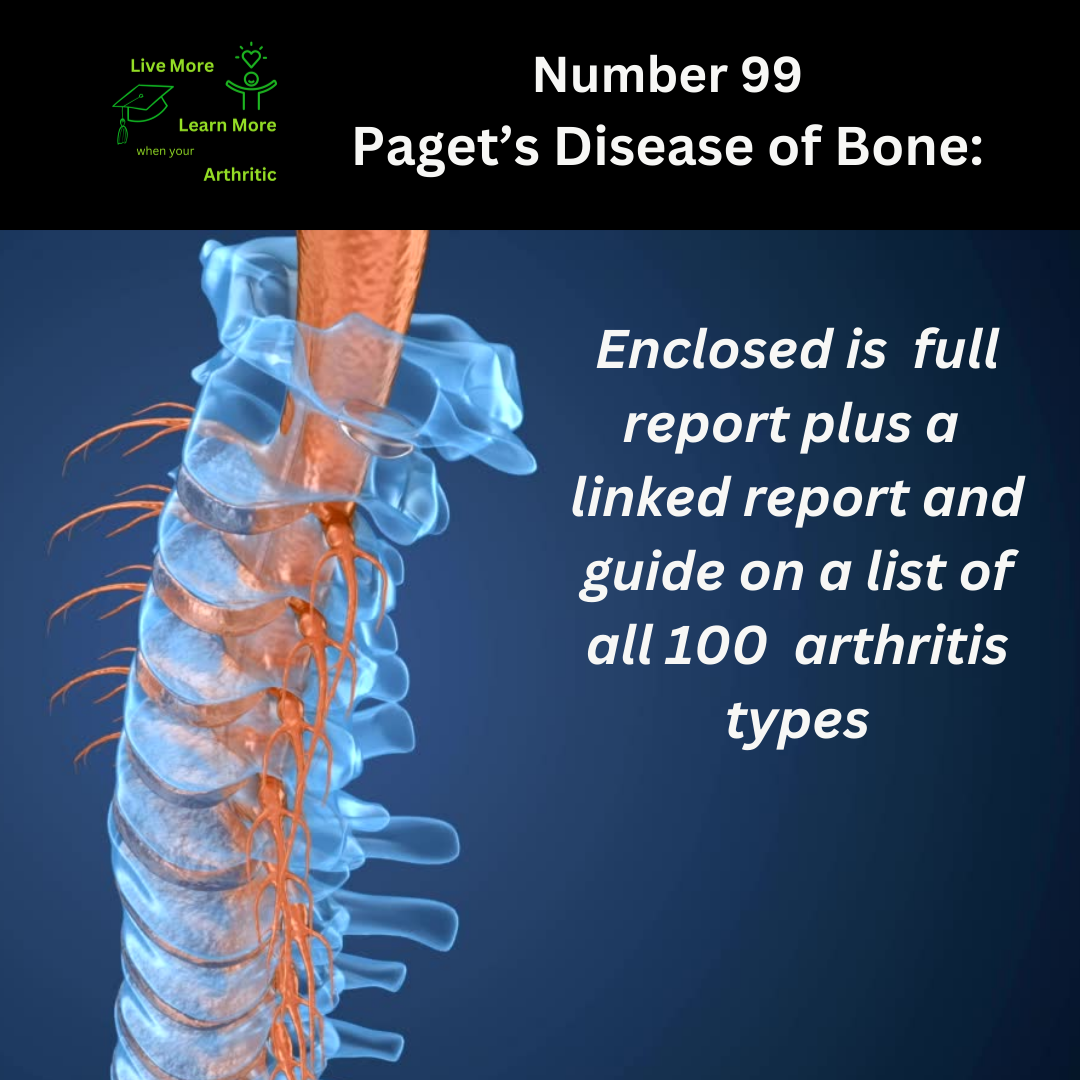
Paget’s Disease of Bone: 99 on the list of 100 types of Arthritis
Understanding Paget’s Disease of Bone: A Complex Condition
Paget’s disease of bone is a chronic condition characterized by abnormal bone remodeling, leading to enlarged and weakened bones. It most commonly affects the pelvis, spine, skull, and long bones of the legs.
Description and Causes of Paget’s Disease
Paget’s disease is believed to result from a combination of genetic and environmental factors. It involves excessive bone resorption followed by chaotic and disorganized bone formation, leading to structurally abnormal bones.
Symptoms and Limited Range of Motion
Common symptoms of Paget’s disease include bone pain, deformities, fractures, and limited range of motion. As the disease progresses, affected bones may become enlarged, leading to bowing of limbs or compression of nearby nerves.
Onset and Lifespan Expectancy
Paget’s disease typically affects individuals over the age of 50, and the onset is insidious. While the disease itself does not directly shorten lifespan, complications such as fractures or secondary osteoarthritis can impact quality of life.
Autoimmunity and Risk Factors
Paget’s disease is not considered an autoimmune disorder. Risk factors for developing the condition include age, genetic predisposition, and possibly environmental triggers such as viral infections.
Complications and Inflammation
Inflammation is not a primary feature of Paget’s disease; however, the abnormal bone remodeling can cause secondary osteoarthritis, leading to joint swelling and tenderness.
Loss of Range of Motion and Complications
The enlarging and deformed bones associated with Paget’s disease can restrict joint movement and cause mechanical issues, such as impingement or nerve compression, leading to loss of range of motion.
Proactive Approach for Quality of Life
A proactive approach to managing Paget’s disease includes regular monitoring, lifestyle modifications, and physical therapy to maintain mobility and prevent complications like fractures or deformities.
Possible Complications and Age Distribution
Complications of Paget’s disease include fractures, osteoarthritis, hearing loss (if the skull is affected), and neurological symptoms due to nerve compression. The condition is more common in men than women.
Interconnected Diseases and Conditions
Paget’s disease is sometimes associated with other bone disorders such as osteoporosis or secondary osteoarthritis. It can also predispose individuals to certain types of bone cancers, although this is rare.
 Conclusion: Navigating Complexity with Hope
Conclusion: Navigating Complexity with Hope
In conclusion, while Paget’s disease of bone poses challenges, a proactive approach to management can greatly improve quality of life and minimize complications. Regular medical follow-ups and lifestyle adjustments are key to maintaining mobility and overall health.
Navigating the complexities of Paget’s disease requires comprehensive medical care and a proactive approach to maintain mobility and prevent complications.

